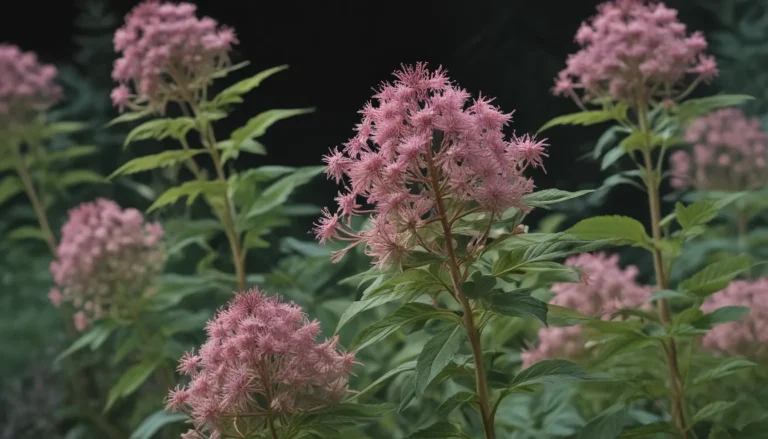The pictures we use in our articles might not show exactly what the words say. We choose these pictures to make you interested in reading more. The pictures work together with the words but don’t take their place. The words still tell you the important facts.
Sage, a herb cherished for centuries for its culinary and medicinal properties, holds a wealth of captivating facts waiting to be explored. From its rich history and cultural significance to its diverse uses in cooking and natural remedies, sage offers a remarkable range of benefits that continue to intrigue and inspire awe. Let's delve into nine captivating facts about sage that will deepen your appreciation for this extraordinary herb.
The Medicinal Marvel of Sage
Sage, scientifically known as Salvia officinalis, has been a staple in traditional medicine practices for its potent medicinal properties. Rich in essential oils with anti-inflammatory, antioxidant, and antimicrobial properties, sage has been used since ancient times to promote healing and well-being.
A Mediterranean Marvel
Native to the Mediterranean region, sage thrives in warm, sunny climates and is commonly found growing wild in rocky areas. Its long, slender leaves, with a velvety texture and grayish-green color, are a testament to its Mediterranean heritage.
Culinary Delights with Sage
With its distinct flavor and soothing aroma, sage is a versatile herb used in a wide range of culinary dishes. Whether added to stuffing, pasta sauces, roasted meats, or soups, sage imparts a savory and earthy taste that elevates the flavors of any dish.
The Diverse World of Sage Species
Belonging to the mint family, sage boasts over 900 different species worldwide. From common sage and pineapple sage to clary sage and Spanish sage, each variety offers unique properties and benefits that make sage more than just a cooking herb.
Sage as a Sacred Symbol
Throughout history, sage has held significant cultural and spiritual importance. Used in ceremonies, rituals, and smudging practices by various indigenous cultures, sage is revered for its ability to clear negative energy and promote healing on a spiritual level.
Nature’s Natural Insect Repellent
The strong scent of sage serves as a natural deterrent for insects, making it a popular choice for repelling pests like mosquitoes, moths, and flies in gardens. Additionally, dried sage leaves can be burned as incense to keep insects at bay while enjoying the herb's soothing fragrance.
Enhancing Memory with Sage
Sage has long been associated with memory enhancement, with certain compounds in the herb believed to improve cognitive function and memory performance. Its memory-enhancing properties have made sage a popular ingredient in natural remedies for memory-related issues.
Spiritual Cleansing with White Sage
White sage, specifically Salvia apiana, is renowned for its cleansing properties in spiritual practices. Often used in smudging ceremonies to purify the energy of a space and promote spiritual well-being, white sage symbolizes purity and protection in many cultures.
Growing Sage at Home
Whether in a garden or a small pot indoors, growing sage at home is a rewarding experience. Requiring well-drained soil, plenty of sunlight, and minimal watering, sage is a low-maintenance herb that provides easy access to fresh leaves for culinary and medicinal purposes.
Sage's captivating qualities extend beyond these nine facts. Delving deeper into sage's world reveals even more intriguing aspects. From its extensive variety of species to the profound wisdom it symbolizes, sage holds a treasure trove of knowledge waiting to be explored. Unraveling the enigmatic nature of this herb promises a fascinating journey of discovery.
Conclusion: Embracing the Enchanting Essence of Sage
Sage is a fascinating plant that not only adds a burst of flavor to our culinary creations but also offers a range of health benefits. From its rich history and cultural significance to its versatile uses in cooking and natural remedies, sage has captured the attention of many. Whether you're a seasoned chef or a gardening enthusiast, exploring the captivating facts about sage will deepen your appreciation for this remarkable herb.
FAQs: Answering Your Burning Questions About Sage
Q: How can I use sage in cooking?
A: Sage can be used in various ways in cooking. Add fresh sage leaves to soups, stews, roasted vegetables, or use dried sage as a seasoning in meat dishes, stuffing, or homemade bread.
Q: What are the health benefits of sage?
A: Sage has anti-inflammatory properties, aids digestion, enhances memory, and contains antioxidants that protect against free radicals. Use sage in moderation and avoid during pregnancy or breastfeeding.
Q: Can I grow sage at home?
A: Yes, sage is easy to grow in a garden or pot with well-drained soil and plenty of sunlight. Regular pruning and harvesting will promote bushier growth and provide fresh leaves throughout the growing season.
Q: What are some traditional uses of sage?
A: Sage is used in smudging rituals for cleansing and purification, believed to have protective properties, and has historical significance in herbal medicine for its antimicrobial qualities.
Q: How can I dry and preserve sage?
A: Dry fresh sage stems upside down in a cool, dry place until fully dried. Remove leaves from stems and store in an airtight container in a cool, dark place for long-lasting flavor and aroma.
Our commitment to delivering trustworthy and engaging content ensures that each fact about sage is both fascinating and credible. Trust in our dedication to quality and authenticity as you embark on a journey of discovery with sage.






